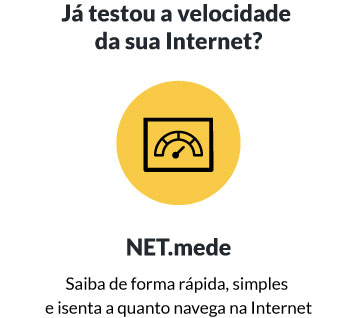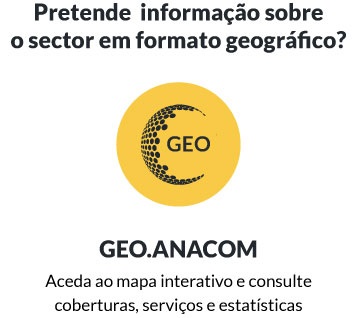Regulation and Spectrum Management: challenges and trade-offs
José Ferrari Careto
ANACOM was one of the first independent regulators to be set up, commencing its activity in November 1989. Since the beginning, it has combined the function of electronic communications regulation with the function of radio spectrum management and monitoring - an approach which was not very common at the time and which has not been adopted by all countries today.
The combination of these two functions in a single body, has been shown to be ever more striking, especially in view of the increased importance of wireless communications in the provision of electronic communication services and networks.
In fact, based on the experience of ANACOM, it is shown that decisions taken in regulation of markets and decisions taken in respect of frequency management are closely related. This close relation means that ideally these decisions should be taken in conjunction.
At a time when the radio spectrum is the enabler of service provision to a growing percentage of the population, and when convergence between fixed and mobile communications and between audiovisual and electronic communications is real, this resource has to be managed more and more from a market perspective. In other words the objectives of spectrum management should be orientated in function of the market, while the technical component should be present as a facilitator in the achievement of these objectives.
This is notwithstanding that in some situations ? which it is hoped are few and duly justified ? these objectives may be adversely affected by others related with the need for prudent radio spectrum management, namely in respect to the need to avoid interference and to preserve international agreements.
It is from this perspective that ANACOM has come to conciliate its activities of regulating the electronic communications market with the management of the radio spectrum. In general terms we have given priority to market related objectives in the management of the spectrum and we see this management as being key in the achieving the objectives of regulation.
This is because it is clear in the objectives that we are set that we need to manage the radio spectrum so that the frequencies are used effectively and efficiently, with the purpose of promoting competition in the provision of electronic communication networks and services and so contribute to the availability of efficient services, with high quality of service and low prices - this is after all the regulator?s raison d?être.
In giving priority to the market in the management of the radio spectrum, we have been progressively adopting an approach of technological neutrality in the allocation and use of the spectrum, with an eye on the eventual evolution towards an approach of neutrality of services when this is possible ? and taking into account legal aspects connected with the legacy of past approaches.
Examples of this new approach are as follows:
- First: the adoption, as of the 2007 National Frequency Allocation Table, of the refarming of the 900 MHz spectrum. This measure means that this frequency band will not remain exclusively linked to GSM technology. ANACOM believes that this decision will allow significant efficiency gains in the coverage of the country with UMTS, with consequent advantages in terms of broadband availability at more affordable prices. With respect to this I would like to note that we expect that these advantages are passed on to the end users ? given that we are dealing with a market that is considered competitive ? and not to be transformed, other than at a proportion that is reasonable, merely into higher profits for the current mobile operators.
- Second: the announcement of placing in the market, at the beginning of 2008, of frequencies in the 3.4 ? 3.8 GHz band destined for Broadband Wireless Access or BWA. The intention of this measure is to make spectrum available to strengthen access to Broadband throughout the country. These frequencies are placed in the market with a perspective of complete neutrality of technology services, provided that potential technical conditions related with the radio regulations and with the need to avoid interference are safeguarded. The selection process will be spectrum auction, being clear that ANACOM considers to use this method not to raise funds but because we do not have to provide an assessment on the quality of the business and technical plans. Given the maturity level of the applications that are suitable for this frequency band (among them WiMax) we are of the opinion, once again, that it should be the market that chooses which entities come to obtain frequencies.
- Third: the decision taken to eliminate the restrictions on the holders of frequency usage rights associated with Fixed Wireless Access, in the sequence of placing in the market the BWA frequencies. In other words, enabling these operators to adopt the technology as they see it, including in the provision of services with non-fixed characteristics (now nomadic and mobile). This measure will avoid a sub-use of the spectrum currently allocated to these entities, thereby increasing the efficiency of its use;
- Fourth: the objective of placing spectrum in a regime of first come first served, whenever technical conditions allow and whenever there are frequencies available in sufficient quantity to satisfy the market. This approach is currently being used in the 24.5 ? 26.5 GHz frequency band, where any entity may request allocation of spectrum to implement the technology that they see necessary and for provision of services which they believe the market needs.
All these decisions have been taken in order to give flexibility to the use of the spectrum, making its use more efficient, abandoning the outdated idea that it is the body managing the spectrum that is best placed to know what is best for the market. It is therefore as a result of the analysis and running of risk on the part of the companies operating in the market that it is hoped that the spectrum will come to be used more efficiently and more effectively, with advantages for the economy and for citizens.
Maintaining this perspective that radio spectrum use should be defined in the market, that the frequencies at the market?s disposal and, by inference, the number of operators in the market should be set by the body managing the spectrum is also shown to be an outdated idea.
In fact, today, it does not fall to the regulator to set the number of operators in the market. Its role is first that of facilitator, in terms of managing the spectrum in order to make frequencies available to the market as considered necessary at any given moment.
Along these lines, ANACOM recently promoted a public consultation in order to assess the potential interest in the market for the allocation of spectrum, particularly in the 450, 900 and 1800 MHz bands. The objective behind this consultation was to identify which frequencies are more attractive to the market in order to make them available wherever possible.
Following this process, ANACOM identified the 450 MHz band as the focus of interest, so setting out that it would place in the market the spectrum available (2x1.25 MHz), preferably by the end of this year, through a beauty contest.
With the logic of providing transparency to the market, ANACOM?s position, in this context, is to clarify the situation with regard to the frequencies currently allocated in this band for the provision of mobile communications in respect to closed users groups (PAMR).
The question is whether, as a result of the tender for the allocation of the new spectrum, the restrictions which currently weigh upon licenses now in force, are to be lifted, a question that is naturally not without relevance to the taking of decisions by economic agents on whether or not to be present in this tender.
As a result of the policy of radio spectrum management which has been followed, in an approach characterised by an increasing adoption of the principles of neutrality and unequivocal focus on the market ? it does not make sense that ANACOM decides other than for these restrictions to be lifted upon the conclusion of the tender process.
This decision, which is not yet definitive ? we just started the public consultation process on this subject ? will surely be the object of participated discussion, given that it is common that the heralds of liberalisation and market initiative drop this thesis in situations that, being identical in terms of the principles, could have a negative impact on the perspective that they have on the market.
In this regard it is important to note two further aspects: the first is that the fact of the regulator returning the initiative to the market, in respect of the quantity of frequencies present in it, as well as the number of operators active in it, does not imply that it absolves itself, in cases of proven lack of competition or of significant restraints on market accountability, to take action that rectifies these faults.
Likewise, and this is the second aspect, the regulator may take the position that guard periods, or moratoria, should be safeguarded, so that recent market entrants can assert themselves; however this should be done in a way that is completely justified, preceded by public consultation and always with a temporary perspective.
I view these examples, taken from ANACOM?s activity in the recent past, as being illustrative of the combination of regulation and radio spectrum management objectives. However, allow me to mention two further areas where this combination is also evident.
The first area regards the definition of the conditions of frequency allocation.
In the case of BWA, ANACOM has already presented its vision to the market that conditions should be included in the auction which should be held for the allocation of respective frequencies, in order to privilege the appearance of new operators.
The approach that is being considered is to carry out the auction for the allocation of frequencies in two phases. In the first, undertakings already holding frequency usage rights in these bands or that already provide mobile communications to the general public will be excluded.
These undertakings will only be eligible in the second phase of the auction, which will only take place if the spectrum is not totally allocated in the first phase.
The intention with this approach is to avoid pre-emption behaviours on the part of the existing operators and to promote the entry of new operators to the market.
The second area is connected to the charging model associated with radio spectrum use.
The model currently in use in Portugal has, in the case of the mobile operators, the particularity of being defined according to the number of active SIM cards.
That is to say that an operator with a lot of customers pays proportionally more than an operator with fewer customers, despite the same operators being allocated an equal number of channels.
This method, which had clear justification on its introduction in the early nineties ? it provided for advantageous entry conditions, given that it was based on the principle of pay-as-you-grow ? has shown itself to be out of line with the fundamental principle of promoting efficiency and effectiveness in the management of the spectrum.
In fact, the current operators do not have any incentive to return unused spectrum, given that this does not bring them any advantage from a cost point of view. To the contrary, they would face the disadvantage of, in this way, promoting the entry of new operators in the market and so increasing the level of competition that they are faced with.
It can therefore be seen that the definition of the radio spectrum charging model could have significant implications for the behaviour of agents present in the market, with profound implications for the level of competition which characterises this same market.
In the Portuguese case this question takes on a more severe stance in that the mobile operators hold the rights of use for the entire available spectrum in the 2.1 GHz band, thereby making an alternative use of this spectrum infeasible.
It was taking the limitations of the current system into consideration, that ANACOM has considered a new model ? to be submitted to the Government for approval ? characterised by the fact of the spectrum being charged not by its use but according to its allocation and in a progressive form.
This is to say that, if the model is adopted, operators in general and mobile operators in particular will have a concrete incentive to free up spectrum which is not being used.
Wireless and in particular mobile communications, have demonstrated that they are a case of success in Portugal. Currently, penetration rates for mobile communications in Portugal are very high, which gives good signs as well for broadband access, given the growing sign up of users to wireless means of accessing this service.
This success and the size of the market make it more important that radio spectrum management is carried out as efficiently as possible ? this requires, unequivocally, market driven decisions.
ANACOM believes that firm steps have been taken in this direction and that, provided that the prudent but innovative management of this resource allow it, it should continue in this way.
Accordingly it will be a facilitator of your activity, with the final objective of having technologically innovative, competitive and high quality communications. This objective depends, in this framework, essentially on your activities in the market.
Thank you.




